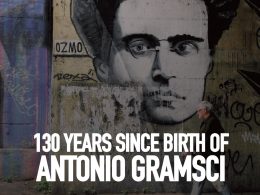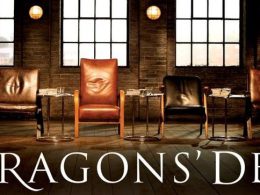In the hearts and minds of workers particularly black workers, the poor, and youth across the world, Malcolm X remains an icon of revolutionary spirit and commitment to justice, freedom, and liberty for the most oppressed people in the world. May 19 marked the 86th birthday of Malcolm X; it has been 46 years since his public assassination.
Malcolm exposed the racism, white supremacy, and its tragic effects on people of African descent throughout the United States and Diaspora.
On April 1, 2011, three days before the release of Malcolm X: A Life of Reinvention, its author, Dr. Manning Marable, succumbed to complications of pneumonia. Marable, a noted scholar of the African-American experience in the U.S. was an activist, editor and author of 20 books, which included the 1983 trailblazing polemic How Capitalism Underdeveloped Black America.
In writing the biography, Marable intended to highlight the missing three chapters from Alex Haley‘s The Autobiography of Malcolm X. Those chapters are in the hands of Detroit lawyer Gregory Reed, who owns the recently-discovered papers of W.D. Fard, originator of the Lost-Found Nation of Islam. A key task of the new book is to launch a campaign to investigate the wider conspiracy to assassinate Malcolm X and bring to justice one of the assailants who fired the “kill shot” ending the life of Malcolm on February 21, 1965 at the Audubon Ballroom in Harlem.
“Although in 1966 three NOI members were convicted of the murder, extensive evidence suggests that two of these men were completely innocent of the crime, that both the FBI and the NYPD had advance knowledge of it, and that the New York County District Attorney’s office may have cared more about protecting the identities of undercover police officers and informants than arresting the real killers,” (p. 13).
Marable aims to show Malcolm’s struggle to overcome his human flaws and become one of the most important and revered leaders of the black freedom movement in the 20th century. In the build-up to the release of the biography – some 10 years in the making – new detailed information was supposed to be revealed. Marable has been dismissive of works published in the late ’80s and ’90s on Malcolm X’s life and using the rescued collection of Malcolm X’s diaries, photos, letters, speeches and other material (now archived at the Schomburg Center for Research in Black Culture) to “reconstruct the full contours of his remarkable life.”
The Black Experience in the United States
In the early chapters of the book, Marable delves into Malcolm’s early childhood, the conditions African-Americans faced in early 20th century, the rise of the Ku Klux Klan and the growth of U.S. capitalism and white supremacy. He deals with the rise of Jamaican-born publisher and journalist, Marcus Garvey and his Universal Negro Improvement Association (UNIA) movement (Malcolm’s parents, Earl and Louise Little, were members) and the development of socialist, communist, trade unionism, culture, art and radical politics in the wider society and the black community in urban centers like Harlem, New York. In the Harlem community “Negro and white canvassers sidled up alongside you, talking fast as they tried to get you to buy a copy of the Daily Worker (Communist Party USA newspaper): ‘This paper’s trying to keep your rent controlled…Make that greedy landlord kill them rats in your apartment…Who do you think fought the hardest to help free those Scottsboro boys?” (p. 52).
The development of Islam in the U.S. dates back to the Atlantic slave trade and Marable examines the growth of Islam during slavery, the rise of black nationalism in the mid-1800’s, the teachings of Edward Wilmot Blyden, the father of Pan-Africanism, as well as black urban Islamist sects like the Noble Drew Ali’s Moorish Science Temple of America. With the decline of the Garvey movement, which was the largest black led movement in the early 20th century comprised of cultural nationalism and black capitalism, many former Garveyites became attracted to the Lost-Found Nation of Islam (NOI) under the leadership of W.D. Fard and eventually, Elijah Poole, who would later become Elijah Muhammad.
The Nation of Islam spoke out against the hypocrisy of American democracy, capitalism, white supremacy, and the horrid conditions faced by black people since slavery. Drawing their membership from the urban black working class, poor, prison population and the semi-employed, NOI preached and practiced a combination of cultural Black Nationalism and pro-capitalist ideals. NOI was a top-down leadership, including a paramilitary wing. Theologically, NOI preached that black people are the “chosen people” to be delivered from the evil of white-supremacy. It was a distinct form of black American Islam that was not recognized by mainstream Sunni Islam in the Middle East. The NOI would even conduct secret negotiations with George Lincoln Rockwell’s American Nazi party and invite George Lincoln Rockwell to speak from its platform. Marable writes: “both groups, after all, dreamed of a segregated world in which interracial marriages were outlawed and the races dwelled in separate states,” (p. 199).
Marable covers Malcolm’s political association with organizations and activists like the Revolutionary Action Movement, Fannie Lou Hamer, and the Socialist Workers Party before and after his split from the NOI. Also, Malcolm X: A Life of Reinvention shows Malcolm’s connection to leaders of the anti-colonial movement like Julius Nyerere of Tanzania and Nasser of Egypt, his meeting with Fidel Castro in Harlem in 1960 and a possible meeting with Che Guevara in late 1964. All of this expanded his popularity and broadened his international understanding. Malcolm would frequently use in his political speeches to stress the importance of the 1955 Bandung Conference of the non-aligned countries of the former colonial world that were not linked to U.S./Western imperialism or the Stalinist Soviet Union.
New Material
Marable’s new and groundbreaking material is in the chronological details of Malcolm’s 25 weeks away from the United States during his hajj to Mecca. Malcolm’s trips throughout the Middle East and Africa had a huge effect on his thinking on Islam and the colonial revolution as he and the Muslim Mosque, Inc. attempted to gain legitimacy in the mainstream Muslim world. Malcolm believed spirituality Islam could play a role in the liberation struggle against racism and white supremacy. Malcolm states, “Our success in America will involve two circles, black nationalism and Islam…And Islam will link us spiritually to Africa, Arabia and Asia,” (p. 311-312).
Malcolm attempted to forge links with newly-independent African nations like Ghana. Despite the gains from the transfer of power in 1957 from England, by the mid-60’s there were political criticisms against Nkrumah and the ruling Convention People’s Party, for a lack of democracy and the rise of a cult of personality. As Marable points out, Malcolm surely heard the criticisms from the African-American expatriates but might have turned a blind eye to it. Malcolm may have also endorsed the authoritarian measures by the government. Malcolm’s trips to Africa sought to gain support for his repeated calls for the United Nations to condemn U.S. human rights violations,and were important steps to internationalize the black freedom movement in the U.S.
Marable brings out the challenges facing Malcolm, navigating the difficult geo-political dilemmas facing former colonialized countries like Ghana, Nigeria, and Tanzania in a polarized world dominated by imperialism and Stalinism and experimenting with hybrid “African socialist/capitalist” models. William Sales, author of From Civil Rights to Black Liberation: Malcolm X and the Organization of Afro-American Unity states, “The various African socialisms and the systems established on that basis in Africa have been criticized by African Marxists as veiled apologies for the consolidation of various forms of dependency and dependent capitalism. In some of these countries, the Communist Party was either outlawed or its members harassed by the government as was the case in Egypt under Nasser…” (p. 86).
Malcolm’s political and religious relationship with Nasser’s Egypt, the Muslim Brotherhood, the Saudi royal family and his denunciation of Israeli Zionism would pose serious questions for Malcolm‘s international work. Marable explains, “This calculated view reflected the broader balancing act he (Malcolm X) performed throughout his time in the Middle East. Egypt’s secular government stood forcefully at odds with religious groups like the Muslim Brotherhood, which had been implicated in a 1954 plot to kill Nasser and subsequently banned…Malcolm, indebted to both sides, could not afford to take positions that might offend either. During his stay in Cairo, his Islamic studies were directed by Sheikh Muhammad Surur al-Sabban, the secretary-general of the Muslim World League. This group was financed by the Saudi government and it reflected conservative political views, so Malcolm had to exercise considerable tact and political discretion.” (p. 368)
One of the great questions about Malcolm’s political development has to do with his statements on socialism and capitalism. As Marable and Sales point out, despite Malcolm’s anti-capitalist statements and favorable socialist remarks on the platform of the Socialist Workers Party’s Militant Labor forums and socialism practiced in the so-called third world, Malcolm was not a socialist. At the time of his assassination, Malcolm was clearly moving in a new political direction which could have led him to socialist conclusions or deepening his revolutionary nationalist ideas. Malcolm didn’t have access to genuine Marxism at home or abroad. Professor Sales states, “Those who noted Malcolm’s turn toward socialism, like George Breitman and Michael Williams, consistently failed to make a distinction between the Marxist-Leninist tradition of “scientific” socialism and the socialist thought of Malcolm X. There is no information available that demonstrates that Malcolm X seriously studied Marxism-Leninism,” (p. 86).
Marable documents an interview Malcolm had with NY Times reporter M.S. Handler, exposing Malcolm’s ambiguity to socialist ideas.
“I am not anti-American, un-American, seditious nor subversive. I don’t buy the anti-capitalist propaganda of the communist, nor do I buy the anti-communist propaganda of capitalists…I‘m for whoever and whatever benefits humanity (human beings) as a whole whether they are capitalist, communists or socialist, all have assets as well as liabilities…” (p. 369).
The material dealing with the assassination plot in Marable’s biography have been covered extensively in Karl Evanzz’s book The Judas Factor: the Plot to Kill Malcolm X published in 1992, and Zak Kondo, author of Conspiracy: Unraveling the Assassination of Malcolm X, published in 1993.
From his release from prison in 1952 to his public assassination, Malcolm’s actions were monitored by the state authorities. The plot to kill Malcolm X flowed from the governmental opposition under the auspices of the Counter Intelligence Program (Cointelpro), which sought to prevent the development of a unified radical movement with leadership. Cointelpro used disruptive methods such as sending falsified letters to organizations and leaders that would lead to bloodshed in the black community. Cointelpro, developed under the leadership of FBI Director, J.Edgar Hoover, was a continuation of the Palmer raids of the early 1900s and the McCarthy witch-hunts of the late 40s and early 50s to neutralize the movements of resistance against U.S. big business at home and abroad.
The NOI and Malcolm’s Organization of Afro-American Unity (OAAU) and Muslim Mosque, Inc. (MMI) was thoroughly infiltrated by the FBI and New York City police department (BOSS unit) respectively. Marable points out, “The NYPD’s narrative about Malcolm’s murder was simple. The slaying was the culmination of an almost yearlong feud between two black hate groups. The NYPD had two priorities in conducting its investigation: first, to protect the identities of its undercover police officers and informants, like Gene Roberts; and second, to make successful cases against NOI members with histories of violence. Its hasty and haphazard treatment of forensic evidence at the crime scene suggested that it had little interest in solving the actual homicide,” (p. 451).
Marable highlights the five assailants are from the NOI Newark, New Jersey mosque. The three men convicted of killing Malcolm; Norman 3X Butler, Thomas 15X Johnson, and Talmadge Hayer convicted of first degree murder in 1966, were sentenced to life. Both Butler and Johnson fought for their innocence in the conspiracy to kill Malcolm. Talmadge Hayer was paroled in April 2010 with great protest from activists. Marable makes the claim, the “killshot” assailant Willie Bradley is still alive, living in New Jersey and was never brought to justice.
Malcolm’s internationalism and revolutionary message was a powerful challenge to the American empire at home and abroad. The conspiracy to kill Malcolm X was a collective effort by elements in the NOI, FBI and CIA, that is still unresolved today.
Marable deals with the controversial aspects of Malcolm’s life like his hustling days as Detroit Red and his homosexual relationship with a rich white man named Paul Lennon. (This topic was covered by Bruce Perry in his Malcolm X: The Life of a Man Who Changed Black America, published in 1991.) The stormy, strained relationship and possible extramarital affairs of both Malcolm X and Betty Shabazz are also covered. Rather than place these events in their political, social and cultural context, in our pop, sensationalized tabloid news, these “revelations” are receiving more attention by the corporate media in its attempts to discredit Malcolm X.
In the Age of Obama
Marable’s most questionable conclusions are the ones in the chapter “Reflections on a Revolutionary Vision.” Here Marable attempts to draw a direct historical line from Malcolm X to President Obama’s presidential win in 2008. Marable exclaims, “These aspects of Malcolm’s public personality were indelibly stamped into the Black Power movement; they were present in the cry, ‘It’s our turn!’ by black proponents of Harold Washington in the Democrat’s successful 1983 mayoral race in Chicago. It was partially expressed in the unprecedented voter turnouts in black neighborhoods in Jesse Jackson’s presidential campaigns of 1984 and 1988 and in the successful electoral bid of Barack Obama in 2008. Malcolm truly anticipated that the black electorate could potentially be the balance of power in a divided white republic,” (p. 483).
This sorry attempt to mollify Malcolm’s uncompromising stance against the corporate two-party system of U.S. capitalism, is intended to neuter the militant, independent, and revolutionary message that Malcolm articulated in his April 3, 1964 speech, The Ballot or The Bullet.
“They get all the Negro vote, and after they get it, the Negro gets nothing in return. All they did when they got to Washington was give a few big Negroes big jobs. Those big Negroes didn’t need big jobs, they already had jobs. That’s camouflage, that’s trickery, that’s treachery, window-dressing. I’m not trying to knock out the Democrats for the Republicans; we’ll get them in a minute. But it is true – you put the Democrats first and the Democrats put you last.”
The best example of Malcolm’s independent electoral program for black people could be seen in the 1966 Lowndes County Freedom Organization in rural Lowndes County, Alabama. Organized by Stokely Carmichael and SNCC, it was an all-black independent political party that fought against black political disenfranchisement and white supremacy. This project was spurred on by the events and lessons of the Mississippi Freedom Democratic Party (MFDP) and Fannie Lou Hamer protest at the Democratic Party Atlantic City convention in 1964, when the Democratic and Mississippi Democratic Party leadership refused to recognize the MFDP delegates at the convention. The Freedom Now Party (FNP) was founded in 1963 by black militants within Detroit who had close ties to Malcolm, and they spoke frequently at political rallies with Rev Albert B. Cleage Jr. and Milton brothers, while he was a member of NOI, and then afterward. The FNP ran independent black candidates for governor, congress, the state senate and the board of education in 1964.
The last two chapters of Marable’s Malcolm X: A Life of Reinvention, and also Peniel Joseph’s Dark Days, Bright Nights: From Black Power to Barack Obama and Ta-Neshisi Coates review of Marable’s biography titled “The Legacy of Malcolm X: Why his vision lives on in Barack Obama” published in Atlantic Magazine are all intended to render Malcolm X’s revolutionary stance against empire and racism “unnecessary” in the face of the so-called “post-racial” U.S. society and the first black president occupying the White House. These apologists for this corporate war president and the capitalist system have re-packaged Malcolm X as an “outdated firebrand” who would have had to check his revolutionary message at the door in today‘s political environment. A far more accurate description of Obama is to be found in Cornell West’s statement describing Obama as “a black mascot of Wall Street oligarchs and a black puppet of corporate plutocrats.” West goes on to point out that Obama has now “become head of the American killing machine and is proud of it” (Chris Hedges, “The Obama Deception: Why Cornel West Went Ballistic,” Truthdig, 5/16/11)
The Meaning of Malcolm X Today
Marable’s Malcolm X: A Life of Reinvention allows a new generation to study and learn more about Malcolm. But Marable’s biography shouldn’t be looked upon as the “definitive” work because there are more aspects of his life and political trajectory that demand further study and research. Malcolm’s life experience and world events moved him to be an active participant in the revolutionary awakening and revolt of the 1950s and ’60s. Malcolm’s revolutionary nationalism, pan-Africanism, anti-imperialism, and anti-corporate stances inspired the birth of the Black Panther Party for Self-Defense, the militancy of the Student Nonviolent Coordinating Committee (SNCC), militant trade unionism of the League of Revolutionary Black Workers in Detroit, and other radical and socialist organizations.
Malcolm matters because the conditions that produced Malcolm still exist. The abject poverty, racism, high rates of unemployment, mass prison incarceration, police violence, layoffs and massive budget cuts, are a byproduct of a sick capitalist system – based on delivering profits for a small ruling elite. These conditions are producing a new generation of revolutionaries who will be inspired by the shining example of Malcolm X:
“I believe that there will ultimately be a clash between the oppressed and those who do the oppressing. I believe that there will be clash between those who want freedom, justice and equality for everyone and those who want to continue the system of exploitation. I believe that there will be that kind of clash…”
–Malcolm X












